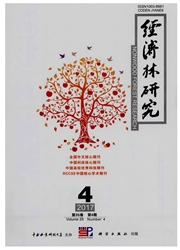

 中文摘要:
中文摘要:
为给红树林保护区的人工造林及红树林持续发展和保护提供依据,对不同树龄无瓣海桑根际土壤的理化性状和土壤酶活性进行了研究。结果表明,不同树龄无瓣海桑的根际土壤为偏酸性至中性(pH6.70~7.04),呼吸速率均较高(〉112mg·kg^-1·h^-1)。根际土壤有机质的含量和含水量随着树龄增加而增加,而微生物量碳、总氮、总磷的含量都在73树龄达到最高值,随后则随树龄增加而减少,表明7a树龄的无瓣海桑根际土壤的肥力最高,随后随树龄增加而降低。无瓣海桑根际土壤的脲酶、纤维素酶和β-葡糖苷酶的活性变化和微生物量碳、总氮、总磷含量的变化趋势类似,在第7年达到最高值,随后则随树龄增加而减少,表明73树龄的无瓣海桑正处于生长的高峰期,根际微生物代谢活跃,和氮素营养、碳素营养的转化有密切关系的土壤酶活性达最大值。而磷酸酶和芳基硫酸酯酶的活性随着树龄增加而增加。脱氢酶的活性在不同树龄无瓣海桑间无显著性差异。相关性分析结果表明,除脱氢酶外,土壤酶活性和总氮、总磷、微生物量碳等土壤肥力指标多呈极显著的正相关。
 英文摘要:
英文摘要:
In order to provide theoretical basis for artificial afforestation, sustainable development and protection of mangrove, physicochemical properties and enzyme activities of rhizosphere soil in Sonneratia apetala at different ages in Futian Mangrove Reserve were studied. The results showed that rhizosphere soil in S. apetala at different ages was neutral or slightly acidic (pH 6.70-7.04), and all respiratory rates were relatively high, and over 112 mg ·kg^-1·h^-1. The water and organic matter contents in soil were increased with increasing of tree age. Microbial biomass C, total N and total P contents were increased significantly from 1 year old to 7 years old, and then decreased with increasing of tree age. It indicated that the soil fertility reached a maximum at 7 years old, and then declined with increasing of tree age. The activities of urease, cellulose and β-glucosidase reached a maximum at 7 years old as change trends of microbial biomass C, total N and total P contents, and then declined with increasing of tree age. It indicated that the growth peak of S. apetala came at 7 years old, metabolisms of the microbes in the rhizosphere were active, and the soil enzyme activities related with C/N nutrient metabolism was up to the most values at 7 years old. Activities of phosphatase and aryl sulfatase were increased with increasing of tree age. There was no significant difference among the activities of dehydrogenase in rhizosphere soil of S. apetala at different ages. The Soil enzyme activities were extremely significantly positive correlated with total N, total P and microbial biomass C contents, but dehydrogenase activity.
 同期刊论文项目
同期刊论文项目
 同项目期刊论文
同项目期刊论文
 期刊信息
期刊信息
